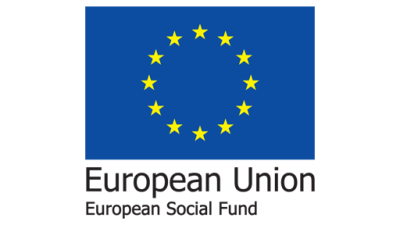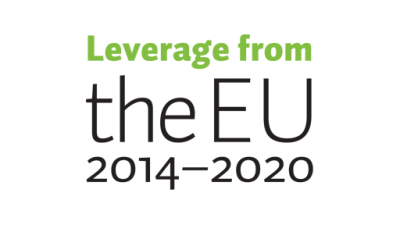Project
SamPo - student´s flexible and seamless learning path
Project sponsors
Abbreviation
Project type
Focus area
Implementation time
1.2.2021 - 31.8.2023
Project unit
Financing program
European Social Fund (ESF)
Primary home page
Project description
The aim of the project is to promote the independent agency of students who need special support and rehabilitation and care services in their attachment to studies, study progress and employment by developing student participation and seamless multidisciplinary guidance. The project targets critical joint stages of vocational education and training. The aim is to develop measures for the prevention and correction of social exclusion risks by creating alternative methods and methods for the multidisciplinary guidance and operation of students also in distance learning.
The result is a comprehensive, student-oriented, planned and seamlessly progressing operating model of the student's entire study path, SamPo's seamless study path, which is also described in an open-access online publication. SamPo - seamless study path Jamk SamPo - saumaton opintopolku | Jamk
The project is implemented on the principle of co-development and knowledge sharing. The development is supported by action research. Student-specific pilots are carried out at four educational institutions: Jyväskylän palvelualan opisto, Pohjoisen Keski-Suomen ammattiopisto POKE (Saarijärven ja Viitasaaren yksiköt), Ammattiopisto Spesia, Jyväskylä, Seinäjoen koulutuskuntayhtymä Sedu. There are differences in the target group students, the needs of the regions and the service networks of the partial implementers. This provides a wide range of piloting and development experience in the construction of the SamPo operating model.The project aims for national applicability and the selected areas serve as comprehensive examples.
A wide-ranging network of experts participates in the project: Jyväskylä Student and Student Welfare, Central Finland Hospital District, Medical Rehabilitation, Kela, South Ostrobothnia TE Service Centre, City of Seinäjoki, Rehabilitation Foundation, Dismantling Drugs Association, Central Association of Mental Health, University of Jyväskylä, Research in Special Education
Contact details:
Project Manager Merja Kurunsaari
Expert Seija Eskola p. +358406214680
Email: [email protected]
Project results
The project was able to respond to the planned development needs in a variety of ways.
The result of the project was the student's seamlessly advancing operating model for multidisciplinary guidance supporting student participation and institution-specific operating models, which are described in the interactive PDF-formated Seamless Study Path online publication https://jamk.fi/en/projekti/sampo-seamless-study path. The online publication is openly available to everyone and can be used by both students and guidance and support staff, workplace instructors and representatives of educational institution management.
The seamless study path was developed as a collaboration of experts in vocational special education and multidisciplinary rehabilitation from four different types of educational institutions and JAMK. Operating models were piloted and new practices tested in institution-specific student pilots. Development was supported by systematic monitoring and evaluation. The expertise of other expert bodies was also utilised in the development work, which expanded the network cooperation between educational institutions and the project. It describes the results of both institution-specific and project-wide development work.
The models are student-oriented and systematic, covering the entire study path of a student who needs special support and various rehabilitation and care services. Activities in accordance with the models promoted the student's attachment to studies, progress of studies and employment. They describe the key transition processes of the study path: the beginning of studies, the stages of learning in working life, the transition to employment and further studies. In addition, the result was a multi-professional guidance operating model and a student-oriented consultation model. Process descriptions and developed practices promote student participation, study progress and enhance multi-professional guidance.
The project promoted and developed the student's multidisciplinary and multidisciplinary support and guidance provided by various actors. The student's multidisciplinary and multi-professional guidance was expanded to support employment in working life and the post-graduate period. In addition, the implementation of the pilot students' multi-professional and multi-disciplinary guidance meetings from the perspective of both the meeting leader and the participants was developed and described with the project actors.
Student involvement as the protagonist of their own study path increased during the development work, according to the experiences of students, project actors and other multidisciplinary actors involved in the meetings (Webropol surveys).
The practices of multidisciplinary cooperation were developed and described as assessing the need for student support, planning support, HOKS discussion and implementing guidance and support as part of the student's study path. In order to implement special support, an overall view of the student's broad support and cooperation with various actors is needed. Therefore, in addition to the staff of the educational institution, other multi-professional support networks of the student as well as contacts from working life during working life periods are included. These are opened online in e.g. educational institution-specific network maps.
Integrative operating models for student encounters and interaction were produced for assessing study, functional and work ability, planning studies, and implementing guidance and support. Students found new approaches and tools for planning their own studies, everyday management and their own future.
The student pilots developed methods of remote control for multidisciplinary cooperation and student guidance. Experiences and descriptions are displayed in institution-specific operating models as part of an online publication.
During the project, student drop-outs have decreased, with only 6 pilot students dropping out (n=65). The main reasons for the interruption were the challenges of life management and mental health problems. Anxiety, substance abuse problems and reduced functional ability prevented the progress of studies and required longer-term rehabilitative measures. Discontinuing studies and the project was in the student's interest: a fragmented study path or tangled studies with the last few forces are not anyone's goal. Discontinued students were directed to rehabilitative measures, accompanied by, for example, Kela, Ohjaamo, outreach youth work.
Inclusion and participation are defined more for the student students have become stronger in inclusion take on and have been given more responsibility for their own studies, with their own current ability. At the school, the student's situation has been carefully focused, the student's knowledge of where and where to get guidance and support during the studies has increased. The student understood the importance of the network around him and its agency. Students better perceive their own studies as a whole and the ongoing study phase. Students attend meetings as the protagonist - dare to say their opinions, evolved to say things better. 'The confidential steering relationship created during the project enabled dialogue to be established and genuine encounters to take place'. Most of the studies have progressed and some have found employment.
31.12.2023 MK

